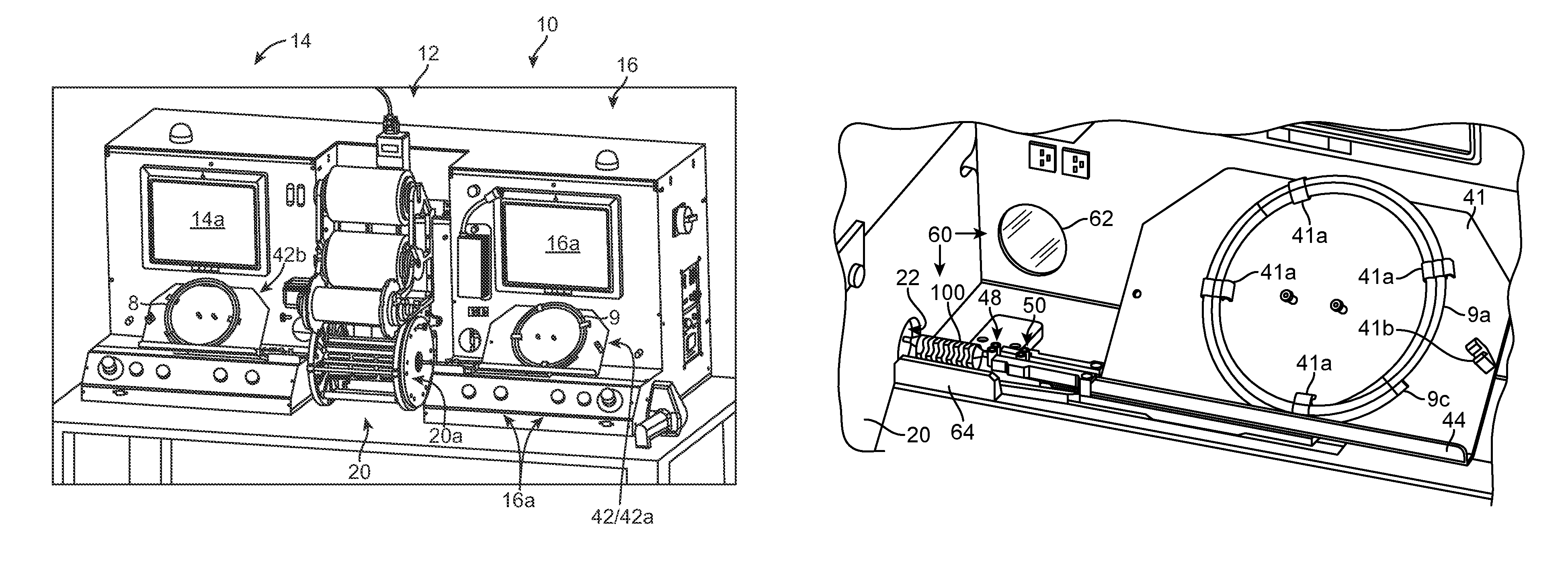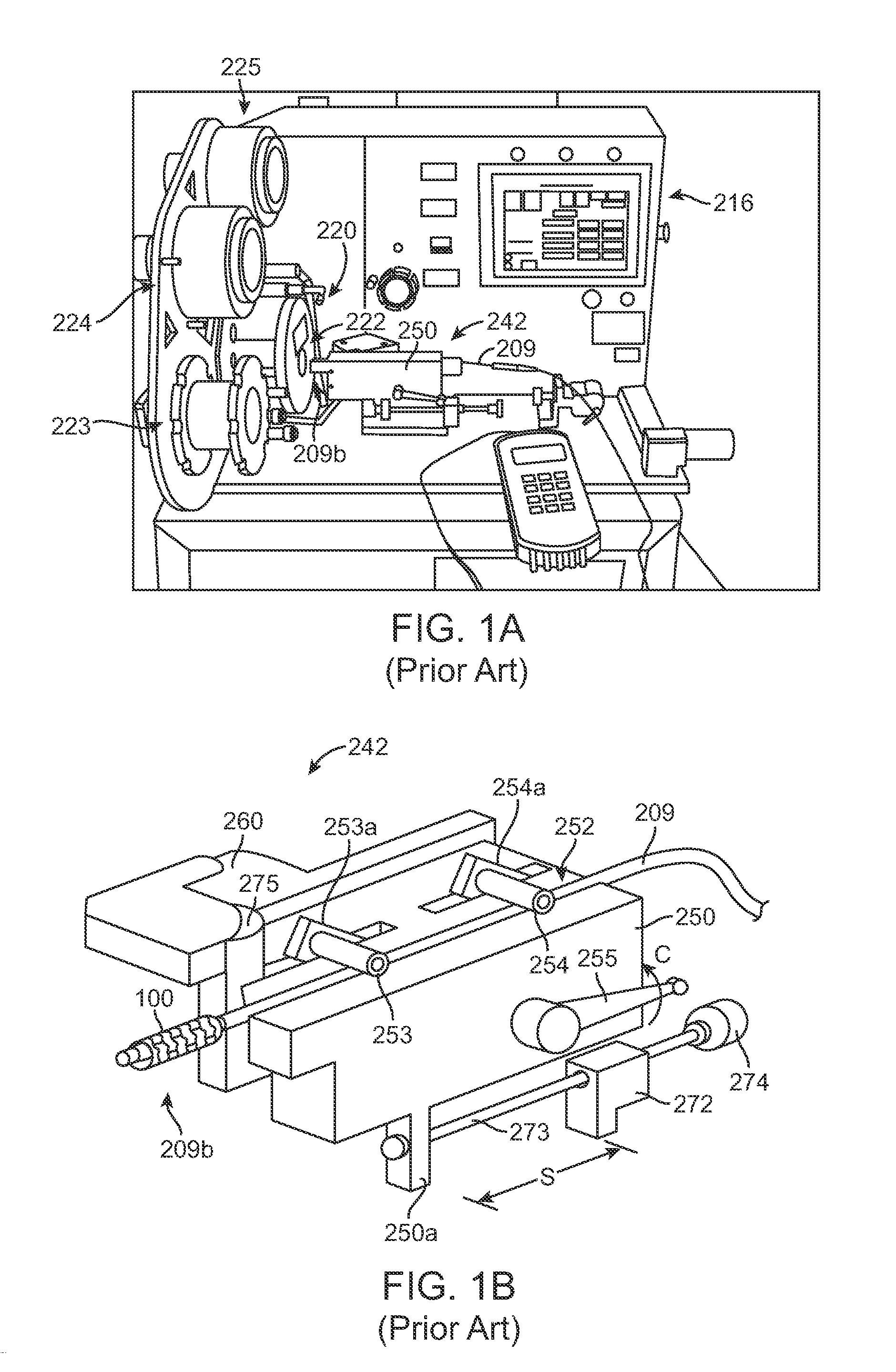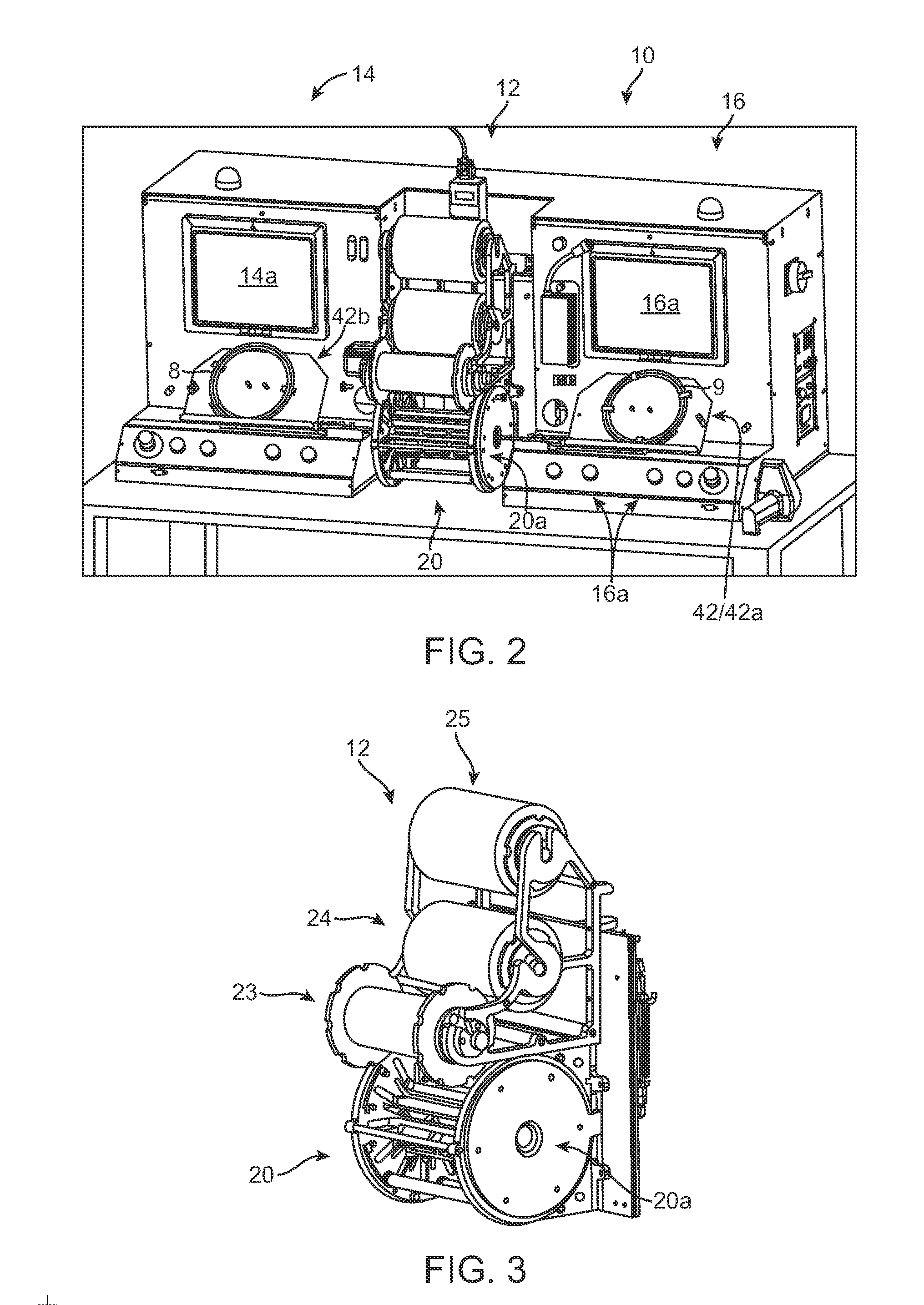Mounting stents on stent delivery systems
a stent and stent technology, applied in the field of drugeluting medical devices, can solve the problems of unfavorable stent crimping, unfavorable stent crimping, and insufficient stent crimping, so as to reduce the time required for crimping, reduce labor, and increase yield
- Summary
- Abstract
- Description
- Claims
- Application Information
AI Technical Summary
Benefits of technology
Problems solved by technology
Method used
Image
Examples
Embodiment Construction
[0042]Throughout this disclosure, the balloon expandable implant will be called a “stent”, whether the description is referring to an implant made in whole or part of a metal material or a polymeric material such as PLLA. In some instances, the term “scaffold” may be used, which is specifically referring to a biodegradable, polymer implant.
[0043]FIG. 2 illustrates a stent mounting system 10 according to one aspect of the disclosure. The stent mounting system 10 is configured for positioning a stent on a delivery balloon, then crimping the stent to the balloon in an automated fashion. The system 10 is preferably constructed so that two stents may be simultaneously loaded onto separate balloon catheters, then each placed within a crimper head by a computer-controlled positioning and alignment system. Both stents are then crimped to their respective balloon using the same crimper head. As such, two stents may be simultaneously crimped to catheters during a single crimping sequence. The...
PUM
| Property | Measurement | Unit |
|---|---|---|
| thickness | aaaaa | aaaaa |
| thickness | aaaaa | aaaaa |
| thickness | aaaaa | aaaaa |
Abstract
Description
Claims
Application Information
 Login to View More
Login to View More - R&D
- Intellectual Property
- Life Sciences
- Materials
- Tech Scout
- Unparalleled Data Quality
- Higher Quality Content
- 60% Fewer Hallucinations
Browse by: Latest US Patents, China's latest patents, Technical Efficacy Thesaurus, Application Domain, Technology Topic, Popular Technical Reports.
© 2025 PatSnap. All rights reserved.Legal|Privacy policy|Modern Slavery Act Transparency Statement|Sitemap|About US| Contact US: help@patsnap.com



